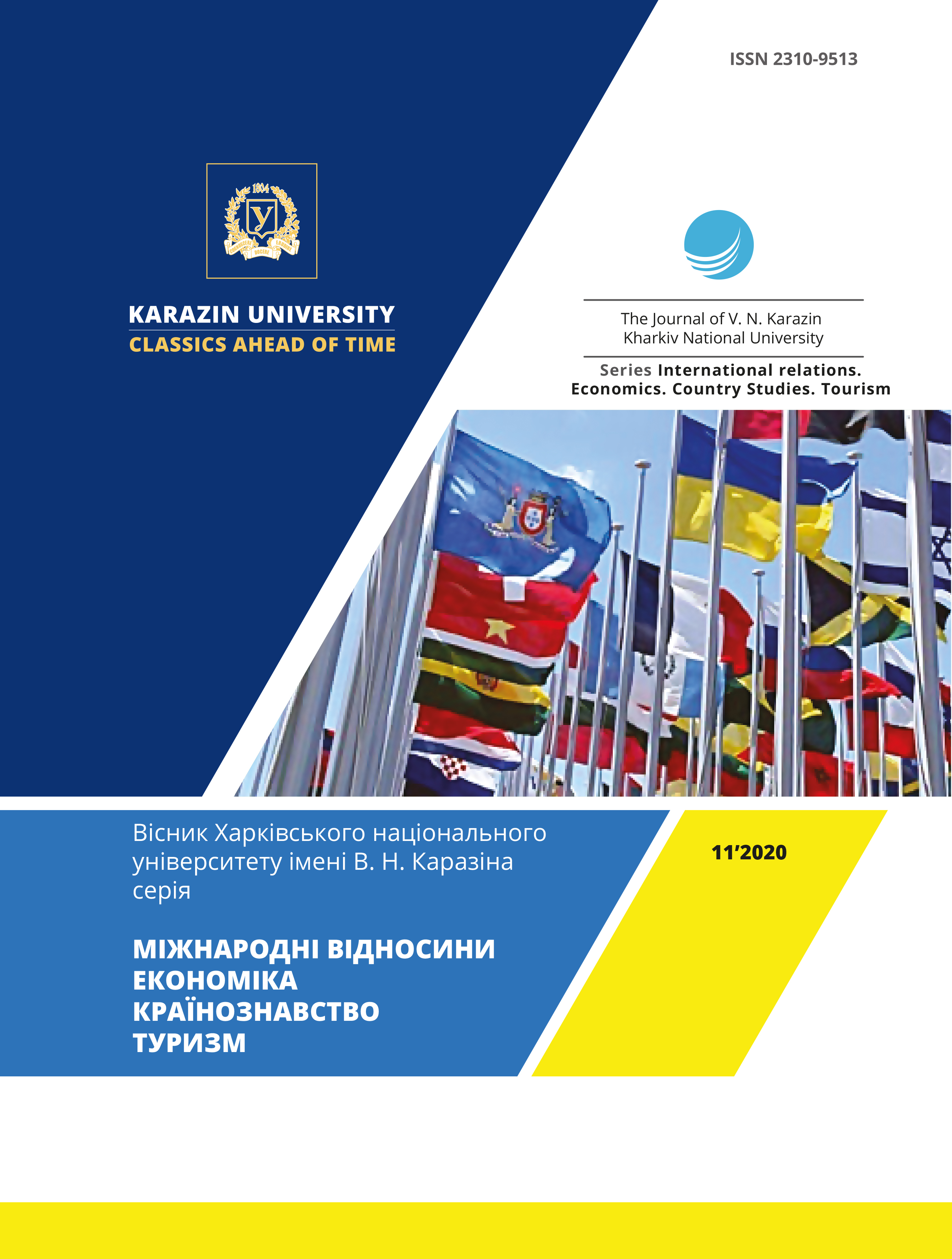US-China trade conflict: causes and consequences
Abstract
At the present stage of development of international economic relations special attention is paid to the study of the relations between the countries that are the world leaders in terms of GDP and foreign trade – the USA and China. This is due to the fact that in recent years the US have introduced a number of measures to counteract the growth of Chinese exports, which has led to backlash from China. The subject of the study is the foreign trade relations of the USA and China. The goal is to analyze the influence of protectionist measures applied by the US and China on the development of their foreign economic relations. The following objectives are set: to determine the level of economic interdependence of the USA and the PRC, to investigate their impact on mutual trade flows and to analyze the dynamics of bilateral trade of countries under restrictive measures. The following methods are: comparative analysis, systematization and generalization, construction of regression models. The results of the analysis revealed that the US and PRC current accounts show reverse dynamics: the United States demonstrates stable deficit, while China has had surplus for many years. Moreover, the structures of the current accounts do differ a lot as well: the US is totally services-oriented country, whereas China is a major exporter of goods. It can be observed that both countries have experienced a recession of foreign economic activity since 2018, as far as their current account balances decreased substantially, which is likely to be the consequence of tariff barriers imposed by the US and PRC. Furthermore, due to trade confrontation, bilateral trade between these countries declines significantly as well, so that now China and the United States are forced to look for new export markets. The results of the regression models allow concluding that import from China is indeed having a negative impact on US exports, which has led to the US restrictions on imports from China. However, the introduction of mutual restrictions did not lead to an improvement of the US foreign trade.
Downloads
References
CNBC Newsletter: US trade deficit with China grows to a record and it’s likely even worse than the data show (2018). Available at: https://www.cnbc.com/2019/01/14/china-2018-full-year-december-trade-exports-imports-trade-balance.html
Babenko V., Koniaieva Y. (2019). Prospects for improving technology in non-conventional energy development. Visnik of V. N. Karazin Kharkiv National University. Chap. International Relations. Economics. Country Studies. Tourism (IRECST), vol. 9, рр. 92-99. doi: 24.26565/2310B9513B2019B9B11
Babenko, V., Gaponova, E., Nehrey, M., Ryzhikova, N., Zaporozhets, E. (2019). Life Expectancy of Population of the Country: the Role of Health Services Effectiveness. Research in World Economy, Vol. 10, No. 4 (Special Issue), pp. 86-91. doi: https://doi.org/10.5430/rwe.v10n4p86
Babenko, V., Pasmor, M., Pankova, Ju., Sidorov, M. (2017). The place and perspectives of Ukraine in international integration space. Problems and Perspectives in Management, Vol. 15, Issue 1, pp. 80-92. doi: 10.21511/ppm.15(1).2017.08
Yakubovskiy, S., Lomachynska, I., Hriaznova, V. North American insurance markets: features and experience for Ukraine. Вісник Одеського національного університету. Серія: Економіка, Т. 24 (2019). Available at: http://visnyk-onu.od.ua/journal/2019_24_1/4.pdf
Yakubovskiy, S., Rodionova, T., Kyfak, A. (2019) Inflow of Foreign Capital as a Factor of the Development of Current Accounts of the Eastern European Countries. Journal Transition Studies Review, No.26(2), pp. 3-14. DOI: 10.14665/1614-4007-26-001
Modelling the economic impact of the Sino– US trade dispute: A global perspective. Deborah H. Y. Tan and Chen Chen (2019). Available at: https://www.jstor.org/stable/j.ctvp7d4j8.18?seq=1#metadata_info_tab_contents
Hosain, Sajjad and Hossain, Saddam, US-China Trade War: Was It Really Necessary? (March 14, 2019). International Journal of Business and Economics, Vol. 4, No. 1, 2019, pp. 21-32. Available at: https://ssrn.com/abstract=3352549
Howmuch.net: Mapping The World's Trade Domination: USA & China's Clout Since 1980 (2019) Available at: https://howmuch.net/articles/trade-timelapse-usa-china
IMF database (2020). Available at: http://data.imf.org
Office of the United States Trade Representative (2020). Available at: https://ustr.gov/countries-regions/china-mongolia-taiwan/peoples-republic-china
The balance: US Trade Deficit With China (2020). Available at: https://www.thebalance.com/u-s-china-trade-deficit-causes-effects-and-solutions-3306277#causes
Citations
THE BALANCE OF PAYMENTS AND THE INTERNATIONAL INVESTMENT POSITIONS TRANSFORMATION OF CHINA IN 2016–2020
Shenderova Anastasiia, Kopych Roman & Yakubovskiy Sergey (2020) Market Infrastructure
Crossref
Authors who publish with this journal agree to the following terms:
- Authors retain copyright and grant the journal right of first publication of this work under the terms of a license Creative Commons Attribution License 4.0 International (CC BY 4.0).
- Authors are able to enter into separate, additional contractual arrangements for the non-exclusive distribution of the journal's published version of the work (e.g., post it to an institutional repository or publish it in a book), with an acknowledgement of its initial publication in this journal.
- Authors are permitted and encouraged to post their work online (e.g., in institutional repositories or on their website) prior to and during the submission process, as it can lead to productive exchanges, as well as earlier and greater citation of published work.




